Topfhelm
Cylindrical shaped helmets appeared starting in approximately 1180. Often dubbed great helms or tophelms, they were in use from the middle of the XII until the XIV century. Tophelms were made to fit closely to the head of knight and some of them even had proto visor that could be opened like a small door, with breathing holes. According to the research of the well-known Austrian historian Wendelin Boeheim – English and French great helms of the XIII century were created with a flat dome while German great helms had a rounded top of dome.
On the front of the helmet, mostly on the right side, though rarely on both sides, there was a cross shaped hole. It was made for a chain that connected the great helm to the body armor. To avoid overheating or when the helmet was not in use, it was simply hung from the chain. It’s interesting to note that during the Second Crusade, knights started to cover their tophelms with a piece of linen cloth in order to minimize the transference of heat to the metal of the helmets. Eventually, this cloth was developed into what is known as mantling or a lambrequin. They served in heraldry and complemented the heraldic figure often found on the helmet and shield as symbols of identity and knightly dignity.
By the end of the XIII century, the apex of the tophelm evolved to a conical shape. At the beginning it was worn over a mail coif and small padded cap. By the end of the XIII century, knights wore a low chalice-shaped bascinet (often equipped with its own mail) under it. It is also interesting to note the role tophelms played in medieval fashion. Many were equipped with different decorative heraldic crests (“cimiers” in French and “Wappenfigur” in German). Cimiers were made from leather soaked with wax. Medieval craftsmans cut out forms in leather and then glued canvas on top of the leather. Then the cimier was covered by whitewash. The final step in their creation was illustration using tempera colors or/and gilding. At their origin cimiers served as recognizable markings so that knights would know who was who, since their faces were covered. Over time, cimiers came to be used as heraldic symbols for knights.
Our Tophelm is based on the Great Helm from Bolzano (circa 1300). It has a flat top riveted on the dome which consists of large plates. There are optimized eye slots and ample breathing holes on the helm, and the shape and number of breathing holes can be changed at your request. Our Tophelm is secured with leather straps and buckle. The addition of a padded liner is also possible. Our Tophelm is available in mild, tempered, or stainless steel as well as in titanium.
Be the first to review “Topfhelm”
You must be logged in to post a review.

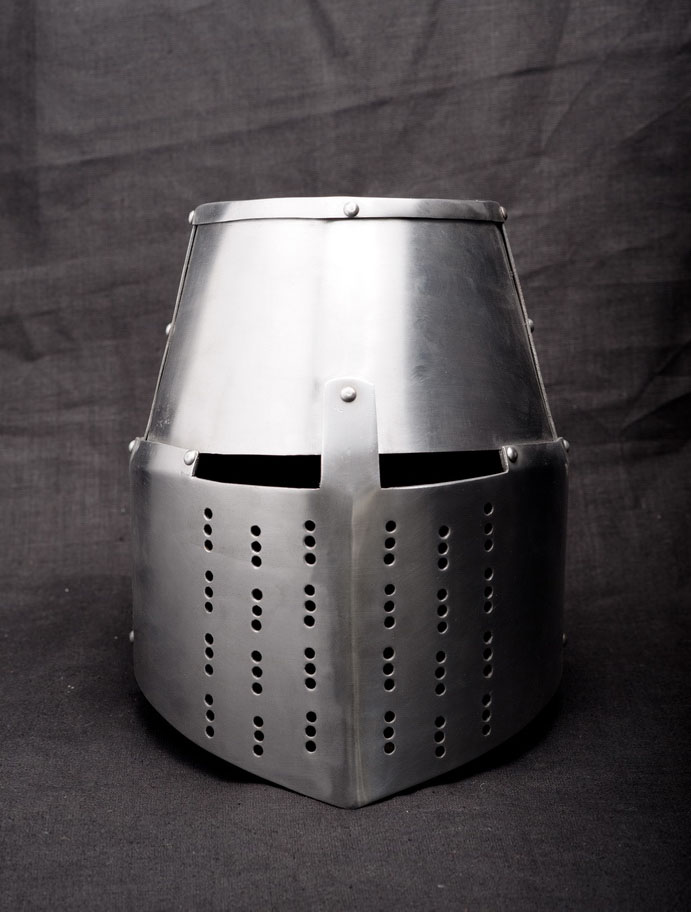
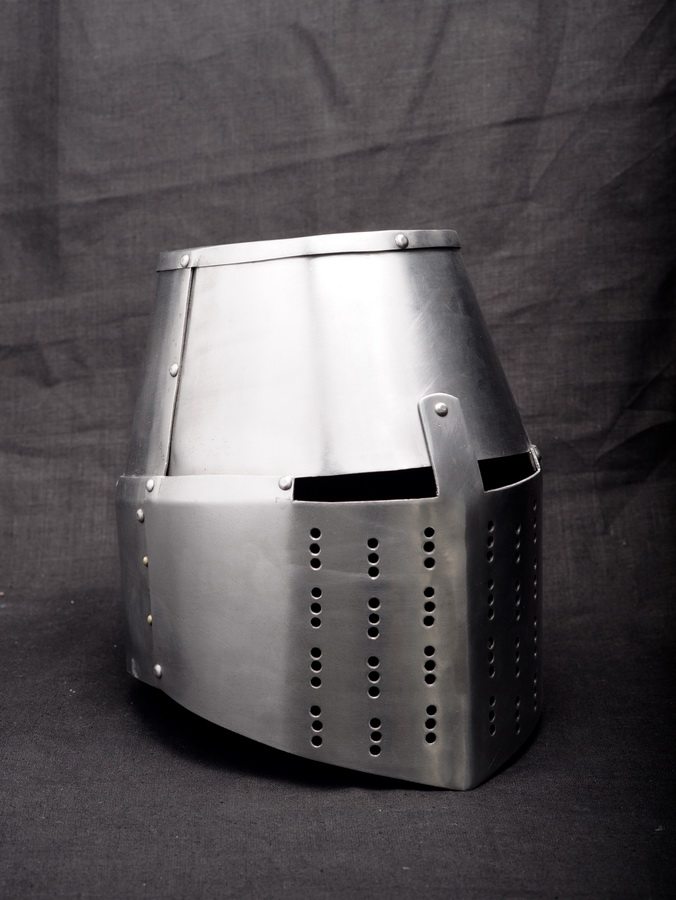
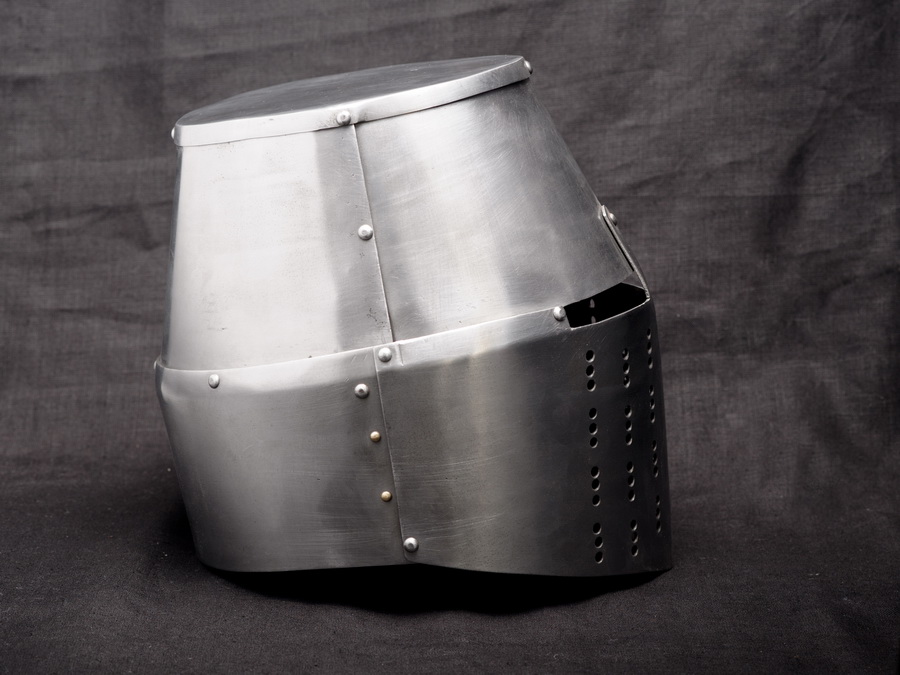
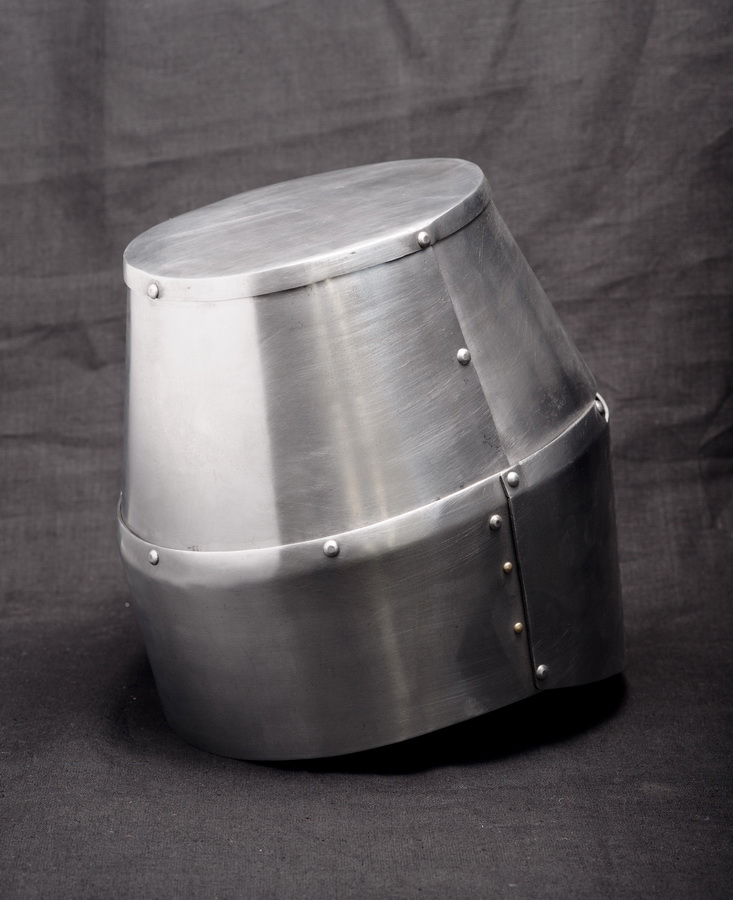
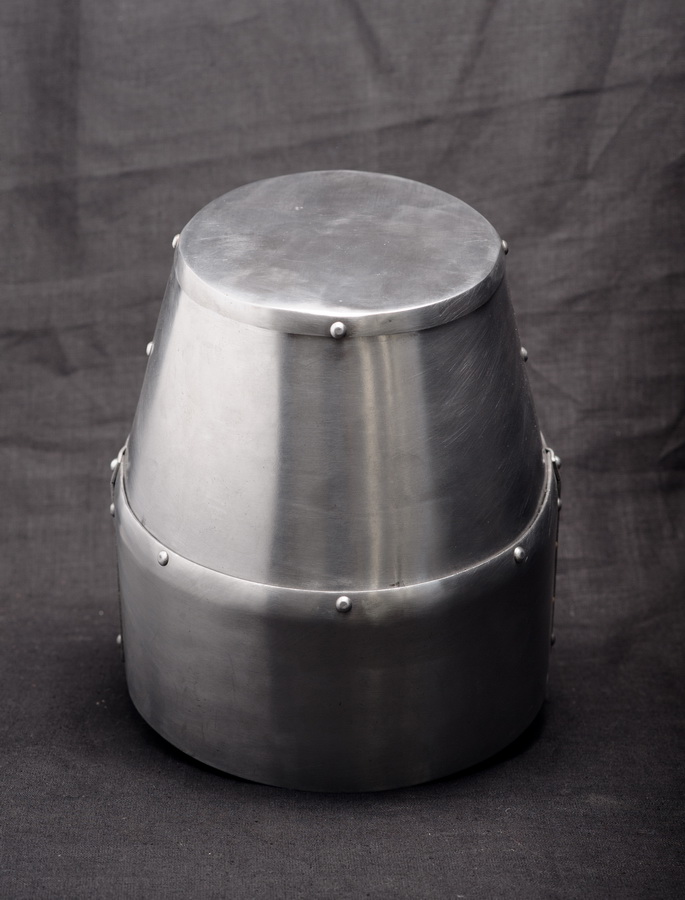
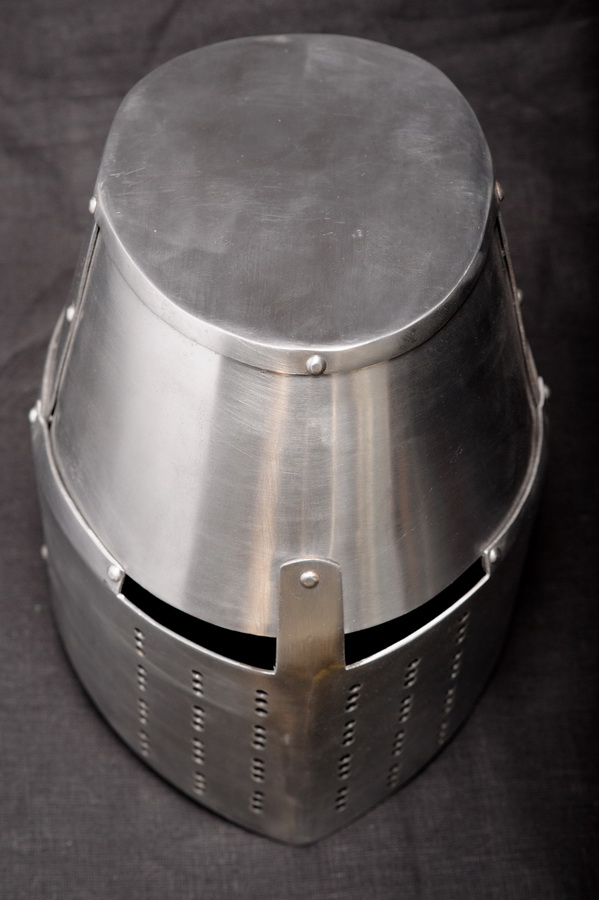
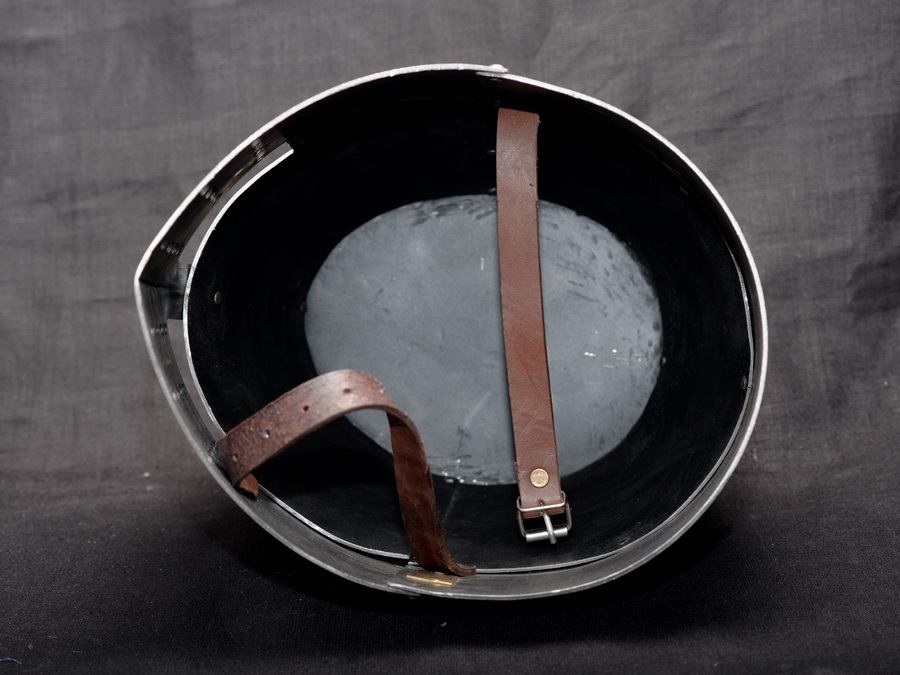
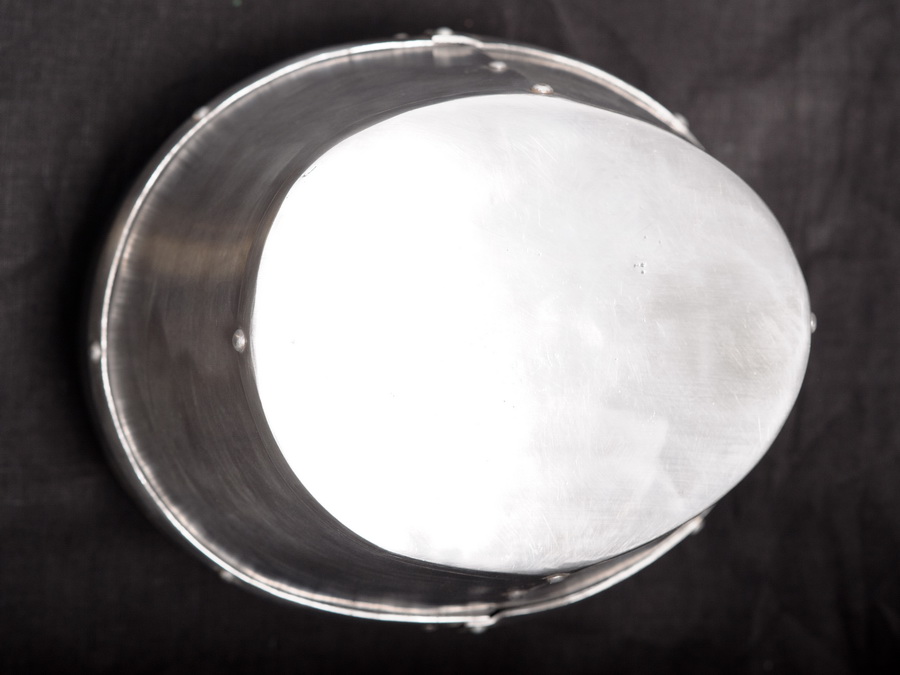
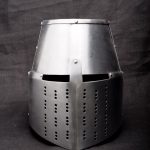


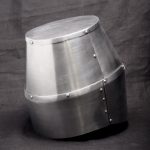
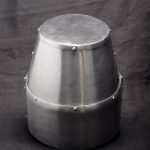
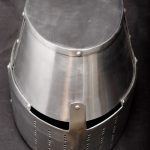
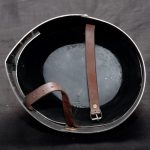
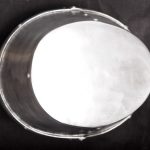
 Shop
Shop
Reviews
There are no reviews yet.